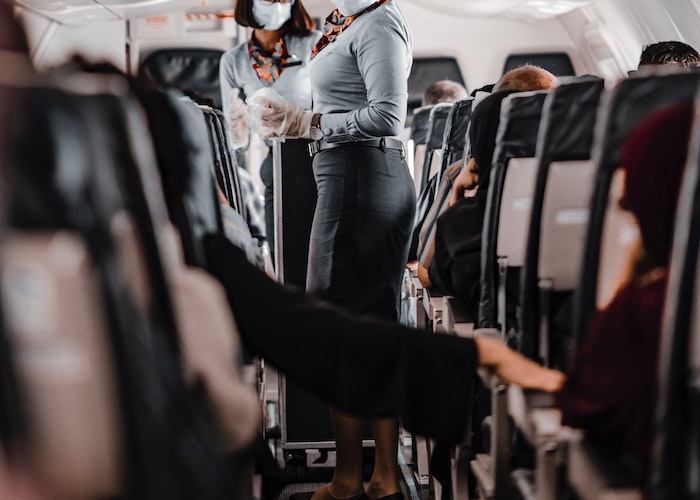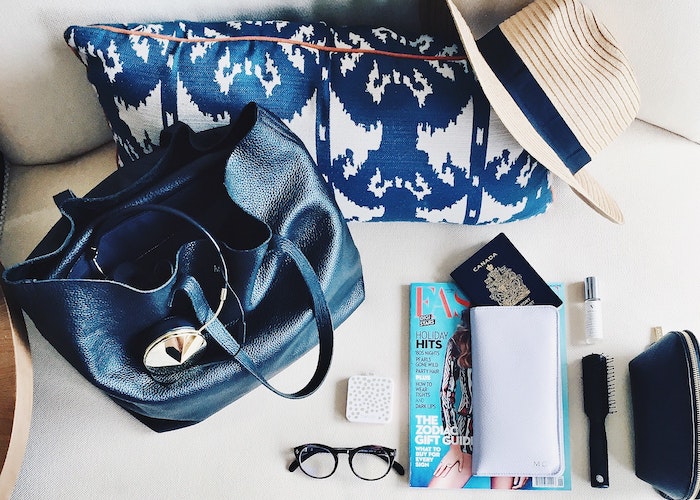6 Extremely Common Travel Spending Mistakes That Can Blow Your Entire Budget

Everyone expects the flights and lodging to be big expenses when you’re planning a trip. But there are loads of small-yet-avoidable expenses that pop up that can really blow your budget if you’re not prepared. Though $20 here and $5 there may not seem like numbers that can put you in a bad place, repeated unplanned expenses definitely can.
Over the years, I’ve made a lot of travel spending mistakes that I would probably prefer to call learning experiences. I’m generally one to believe that we need to make our own mistakes to learn from, but I can try my hardest to share things I’ve learned the hard way in hopes that it’ll save you a few dollars. After all, money that needs to go to surprise expenses is money that is taken away from fun stuff like museum fees and beachside bucket drinks.
6 Travel Spending Mistakes To Avoid
1. Only traveling when you have a companion
I know that there are countless articles out there about the power of solo travel, and while I believe that to be true, we’re not getting that deep here. Quite literally 100% of the time I travel with a companion, I spend about 30-50% more money than I would by myself. To make it worse, sometimes the stuff I spend on isn’t even something I wanted to do/see/eat, but rather something I went along with because my friend wanted to do it.
We’re more likely to spend on dinners out, trips to local bars, and shopping when we have company, so the best way to avoid that needless spending is to go alone. When you’re solo, you’re the only person in charge of what you do/see/eat, and if you don’t feel like spending $30 on a nice dinner, then you don’t have to.
One major exception here is if the friend is a local. I recently visited Turkey with a good friend who had lived there, and though I spent more than I have hoped, it was worth every penny because I was able to eat (and drink) my way through Turkish cuisine, all of which was stuff she knew I would like so it was money well spent.
2. Always buying the “ultra-low-cost” fare
While I’m all for snagging the cheapest ticket possible, there can be times where that can cost you. Pay very close attention the inclusions of the cheap ticket: does it include a checked bag? An onboard meal? What about the acceptable carry-on size? Do you even get a carry-on?! Think about what you’ll need to bring with you on the trip, and let that factor into your ticket choice.
If you’re heading to Costa Rica for a week, packing lighter summer clothes doesn’t take up too much space, so you can probably get away with only a carry-on bag. If you’re visiting Iceland in November, you may need to plan to check a bag — boots and coats take up a lot of space, so keeping a carry-on to an acceptable size would be a challenge for even the savviest of packers. Buying a checked bag at the airport can run you anywhere from $25-$100 in the U.S., which would not be a welcome surprise expense at the very beginning of your trip!
Good questions to ask yourself:
- How much will I need to pack?
- Can it reasonably fit into a carry-on?
- Can I make sure my carry-on doesn’t bulge and exceed the size dimensions or weight restrictions?
- Do I have any must-bring items that would put me over the liquids allowance?
- What will I have coming back (souvenirs, gifts, breakables, etc…) that may cause me to need to check my bag?
3. Not having a general understanding of the public transit situation
Believe it or not, not every city has rideshare programs or reliable public transit, and that tends to be something people forget to look into until they’ve arrived at their destination and need to figure it out on the fly. I once landed in a city that I knew had a decent shuttle bus to the city center, only to realize once I got there that it didn’t run 24 hours a day. That was a very expensive taxi ride. Search terms like “Getting around Berlin” or “Airport to city center Singapore” will serve up the information you need about transit.
Other good things to think about (especially if there may be a language barrier):
- How do I buy my bus/train ticket? (Onboard? At a kiosk? From a tiny window at a convenience stand that looks nothing like a ticket vendor?)
- Are daily/weekly passes available?
- Is Uber/Lyft available and safe? Or is it better/more common to take a taxi?
4. Thinking hostels are dirty murderholes
If you’re a millennial or older, you’re probably familiar with the movie Hostel. Honestly, the scariest thing you’re likely to encounter is a loud snorer or a lump of not-your-hair in the shower drain. Hostelling is a major part of travelling in places like Europe and Asia, but few people know that there are also hostels in the U.S. and Canada. Most major cities will have at least a few options. If you’re new to hosteling, here are a few key tips to picking a good hostel:
- Look at the pictures and try to find guest-submitted photos.
- Read the reviews! I like to sort by the date the review was submitted to get the most current information.
- Try to prioritize hostels that offer free breakfast and activities. Free food is always nice, but when a hostel has activities, that shows that they really want their guests to be able to connect. Free walking tours are my favorite thing to see listed on a hostel’s website.
- Consider the neighborhood the hostel is in compared to the places you want to visit. I love using the TripAdvisor city maps because I can see where the concentration of activities are and then compare with the hostel location.
- Price matters, but I consider the other four items on this list before letting price come into play. Sometimes it’s about the value, not just the pricetag.
5. Not researching hotel/occupancy taxes in advance
This one is super sneaky, and it only popped onto my radar once I started working in hospitality. Each city has its own “occupancy tax” structure — this means that there will be a tax imposed on whatever lodging you choose, and that tax will be the same percentage regardless of the type of accommodation you choose (unless, of course, you’re camping or staying with a friend — if a friend tries to charge you an occupancy tax for their futon, reevaluate that relationship).
A quick Google search can reveal the total tax amount you can expect to have added onto your stay. In the U.S. (and a few other places I’ve bee), there has been a state/province tax, with an additional city tax on top. If the tax percentage is outrageous, try looking in the immediate surrounding cities/towns to see if it will make a big difference. The state tax will remain static, but the city/towns can fluctuate.
6. Not bringing some sustainability tools
Okay, this one is slightly less about budget and a little more geared towards smart packing (which will ultimately impact your spending).
Here are a few items I pack every time I travel to ensure I’m not spending on things I don’t need:
- A reusable bag. This is good for any type of shopping, be it snacks from a mart or souvenir shopping. I bring something small enough that I can fold it and stow it in my purse just in case.
- A small-ish water bottle. I have one that fits into by purse, and keeping it with me means (almost) never having to spend on bottled water. I just always make sure to ask my hostel or hotel if the tap water is safe before drinking it.
- Electrolyte packets. This pairs with the water bottle. I get so outrageously dehydrated when I travel, and as a migraine-prone lady, I need to make sure I’m not wasting away or triggering head pain from lack of proper hydration. I usually bring 1 per day I’ll be gone, plus another two for days with long flights. I like the Ultima brand.
- A big ol’ bag of nuts. I will never travel without a bag of roasted, salted, and shelled pistachios. Have something that has a little protein and fat that is super portable. Pistachios have topped yogurt, been an emergency snack on a delayed train, been dinner one rainy night that I didn’t feel like leaving my hostel — and they’re supremely portable.
Hopefully, you’ve been able to take a few tidbits that will help save you a few dollars (and headaches) on your next trip. Though I’m not one to advocate for planning down to the dollar, I will always support doing a healthy amount of research and having a keen awareness of the types of expenses that might arise.
Katie is an elder millennial tourism professional and travel writer who sees no problem with being a little silly. She uses her blog, Weird Travel Friend, to share insight about the unusual, under-reported, and budget-friendly sites in the places she visits. She can be found on all the social medias, but sharing pretty pictures with painstakingly researched captions on her Instagram, @weirdtravelfriend.
Image via Unsplash
Like this story? Follow The Financial Diet on Facebook, Instagram, and Twitter for daily tips and inspiration, and sign up for our email newsletter here.




